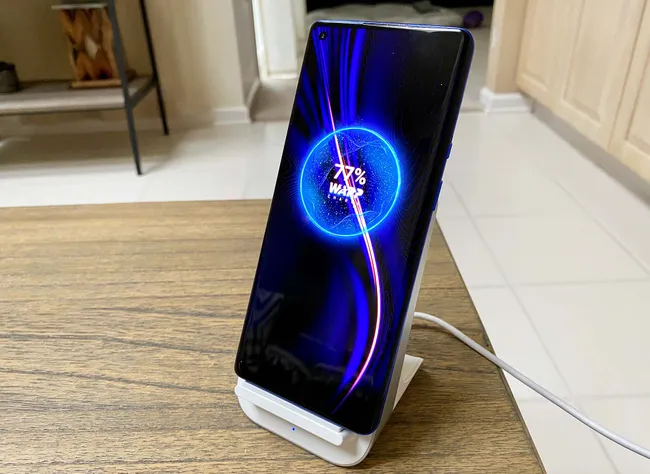Such mutterings have been around for a while, but as more and more people start to use Qi in their daily lives and - especially - as companies like Apple are mooted to switch to phones with no ports in 2022, relying purely on wireless charging, I have to acknowledge that there might indeed be an issue here. Here's a typical anti-Qi video (excuse the guy in his vest, it seems as though he's either wearing it to sell some 'merch' or because he's recording in a boiler room!):
Although I don't fully agree with Scottie about simply 'plugging in a cable' and do think he's being a little alarmist, I also have sympathy for the point he's making. If indeed phone manufacturers do stop shipping phones with charging ports then the world is indeed in a bit of trouble at the 'billions' scale. And he also makes the point that with no cable port then USB-on-the-go and storage connections can't easily be made - plus diagnosing problems and repairs will be harder. Dropping a data/charging port would indeed be a very bad move in my eyes.
Partly this is about education - teaching people that Qi wireless charging is just for top-ups and not as a primary charging solution. Thankfully, at the moment, most 'normobs' with Qi-enabled phones (typically an iPhone 8, X or 11 series) rarely use the technology. My own daughter knows full well what Qi is, plus I gave her an charging pad to use and... she's never taken it out of its box, a year later. Which is mind-boggling, but probably fairly typical. So we're not an planet-killing apocalypse level just yet. However, if Apple (or Samsung) decide to indeed go for a port-less phone with Qi expected to take the entire charging brunt then a) users are going to have a bit of a shock in terms of their daily routines, and b) the (relatively large) inefficiencies will indeed start to add up.
So... will Apple, Samsung, or some Chinese outfits go down this route? I'm hoping not, though I do worry when see phones like the OnePlus 8 Pro feature 'up to 30W Qi charging'. At the standard 5V received to the battery circuits, that's 6 AMPS being effectively delivered electromagnetically. Through a few millimetres of plastic, glass and TPU. That's a lot. And for that 30W delivered, there's around another 30W completely wasted, in terms of heat generated by the charging stand and phone itself. Which is a little criminal.

(Image credit: Tom's Guide)
So yes, the worry is that 30W is high enough and fast enough that some phone makers will take plunge. And, in turn, plunge the phone world into a decade of utter charging wastage.
So despite my innate love of Qi, even I remain a little cautious. Wireless charging needs to stay a 'top up' technology and nothing more. We still need cool, efficient wires. Both for charge and also (occasionally) for data, flashing, extending.
Scottie's point about 'just plugging in' a cable to charge being easier doesn't really ring true, as anyone who's tried plugging in a cable in low light, in a bedroom or car, can attest. It used to be twice as hard, of course, with microUSB, which had to go in the 'right' way up. At least we now have reversible standards in Type C and Lightning - but even so, finding the orifice when you can't really see what you're doing can take a few seconds. While simply popping your phone down on a similar-sized pad is simplicity itself - and you usually get a LED confirmation on the pad that charging is progressing properly. 'Alignment' doesn't matter as critically as Scottie makes out, you've usually got a centimetre leeway, either way with modern phones. Plus with the best Qi pads having multiple coils anyway you can be quite cavalier in putting the smartphone down.
Data points welcome. How much do you use Qi charging? And is it just a top-up thing for you or something more? Would you like (or hate) a port-free phone world?
PS. There's one slight balancing factor. I hate to mention it, but I live in the UK and our houses need some heating for well over half the year. In which case inefficiencies in any tech become irrelevant since the heat 'wasted' just helps heat the house and there's less for the main heating system to do.
